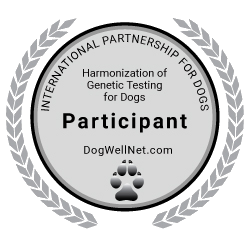Genetic testing for Coat Color in horses
Chestnut Coat Color in horses and the trait of inheritance
Chestnut is one of the major coat color variants in the horse and is characterized by an entire red coat lacking black or brown pigmentation. Chestnut Coat Color is an inherited autosomal recessive trait. This means that a horse can be genetically clear (homozygous normal), affected, or a carrier (heterozygous). The carriers can spread the Chestnut Coat Color gene in the population. Therefore, reliable information on non-affected horses is the key for controlling. The Extension locus has two alternative states (alleles). The dominant allele E produces black pigment in the coat. The recessive allele e produces red pigment. Chestnut horses are homozygous e/e.
Bay/Black Coat Colour in Horses
The Agouti gene controls the distribution of black pigment. The dominant allele A restricts black pigment to the points of the horse (Mane, tail, ear rims). The recessive allele a uniformly distributes black pigment over the entire body.
Cream Dilution Gene
The Cream Dilution gene is responsible for the Palomino and Cremello coat colour of genoypically chestnut horses, for the Buckskin and Perlino coat colour of genotypically bay horses and for the smoky black and smoky cream coat colour of genotypically black horses.
The mutation-based gene test and its advantages
The genetic defect leading to the disease has been identified. By DNA testing the responsible mutation can be shown directly. This method provides a very high accuracy test and can be done at any age. It offers the possibility to distinguish not only between affected and clear horses, but also to identify clinically healthy carriers. This is an essential information for controlling the disease in the breed as carriers are able to spread the disease in the population, but can not be identified by means of common laboratory diagnostic.
Requirements
The test is performed out of EDTA whole blood (1 ml). The results are out about one week after arrival of the sample in our laboratory.


